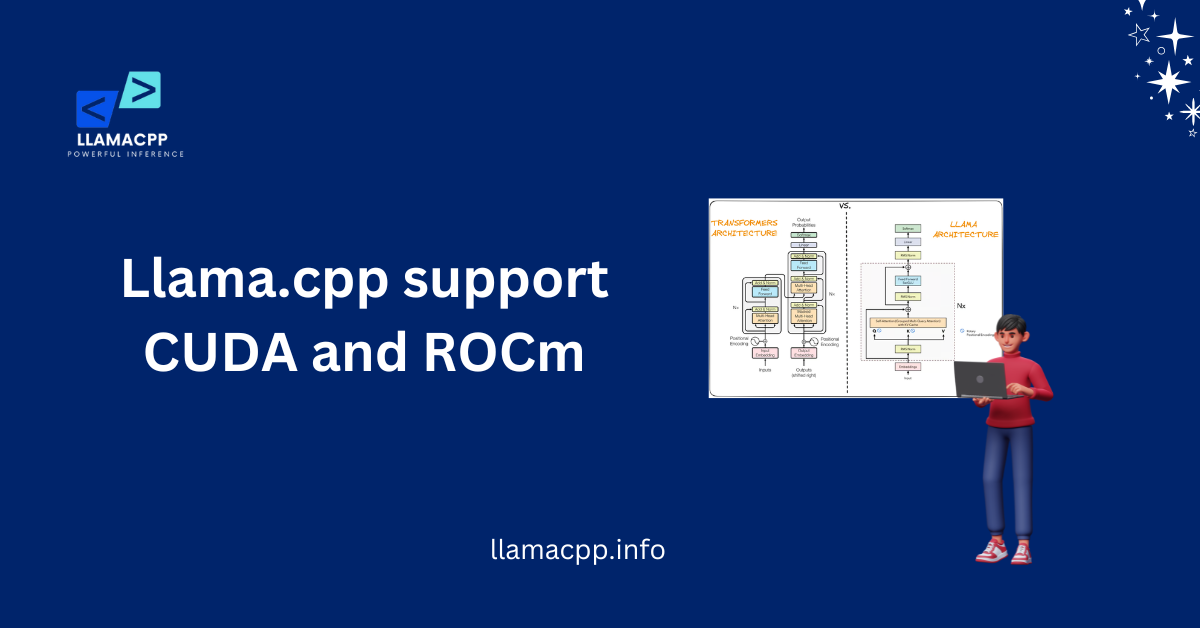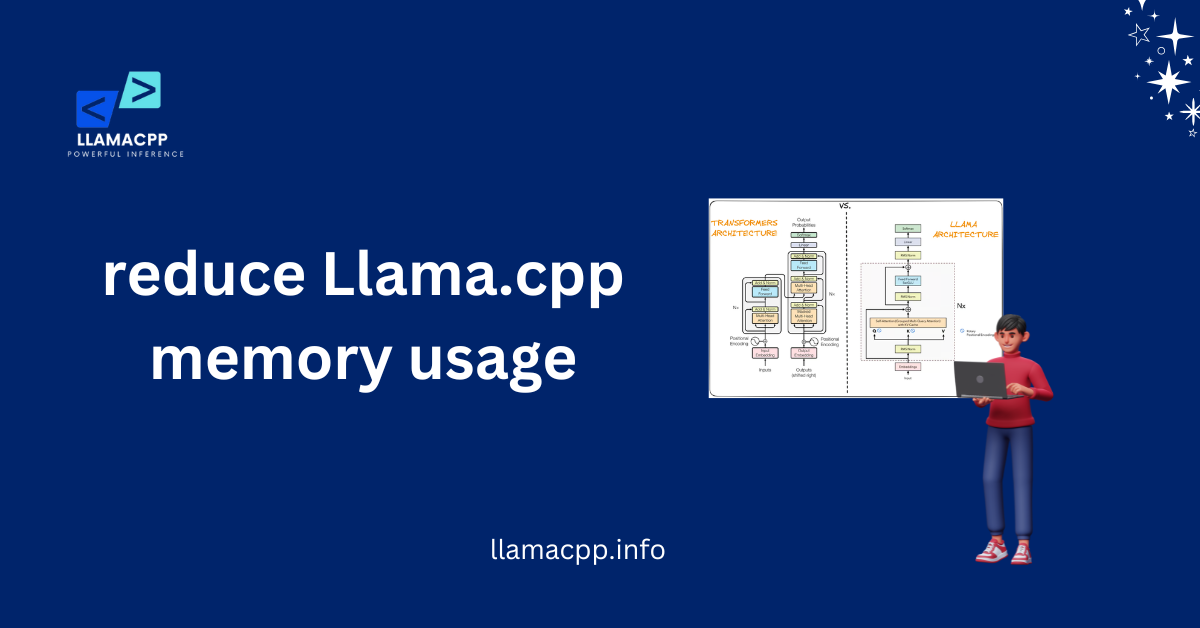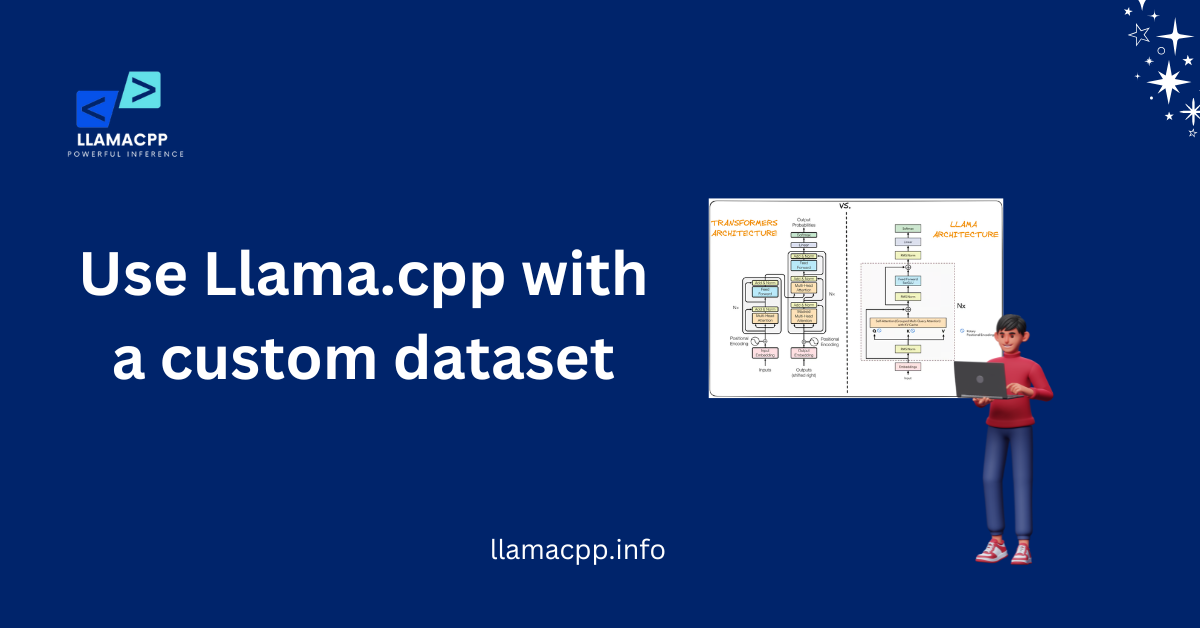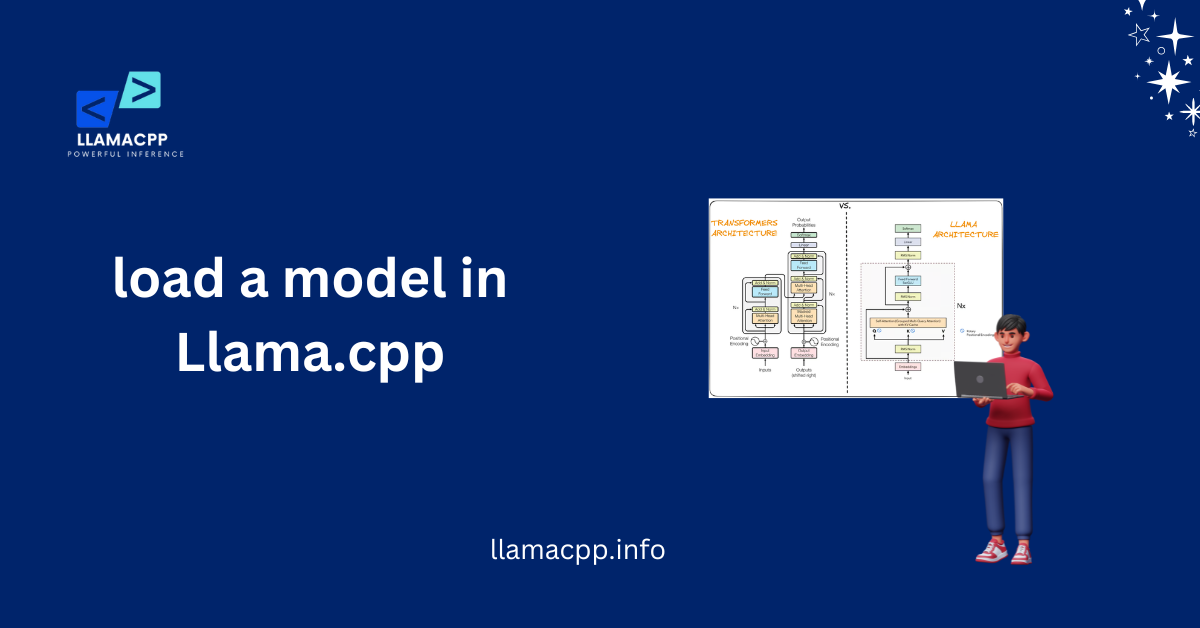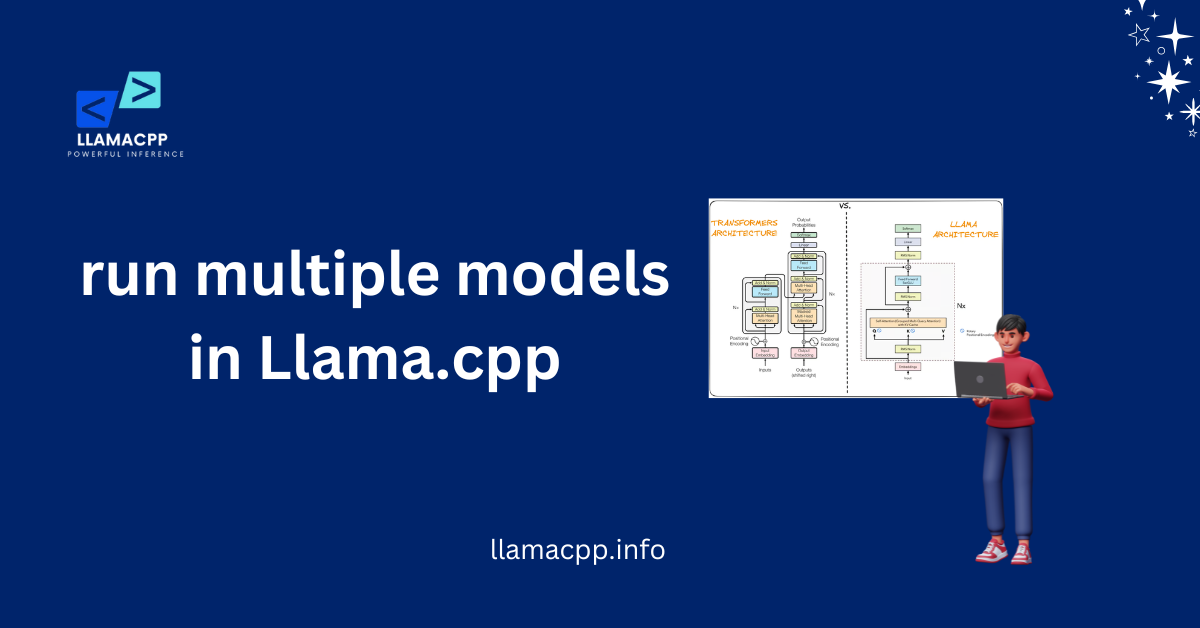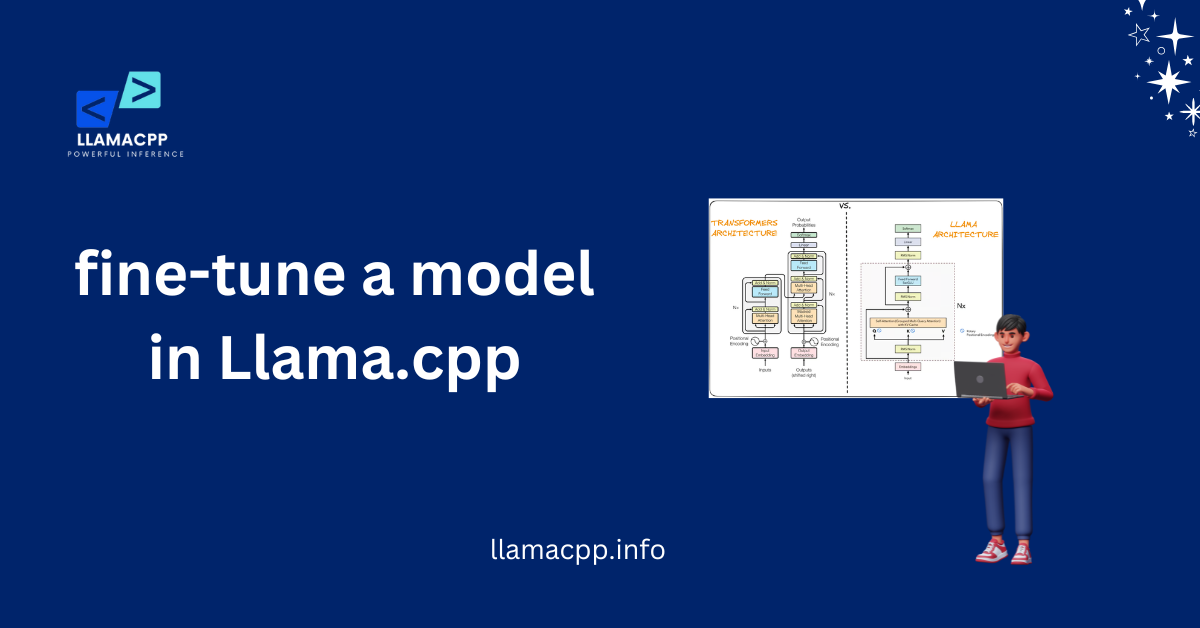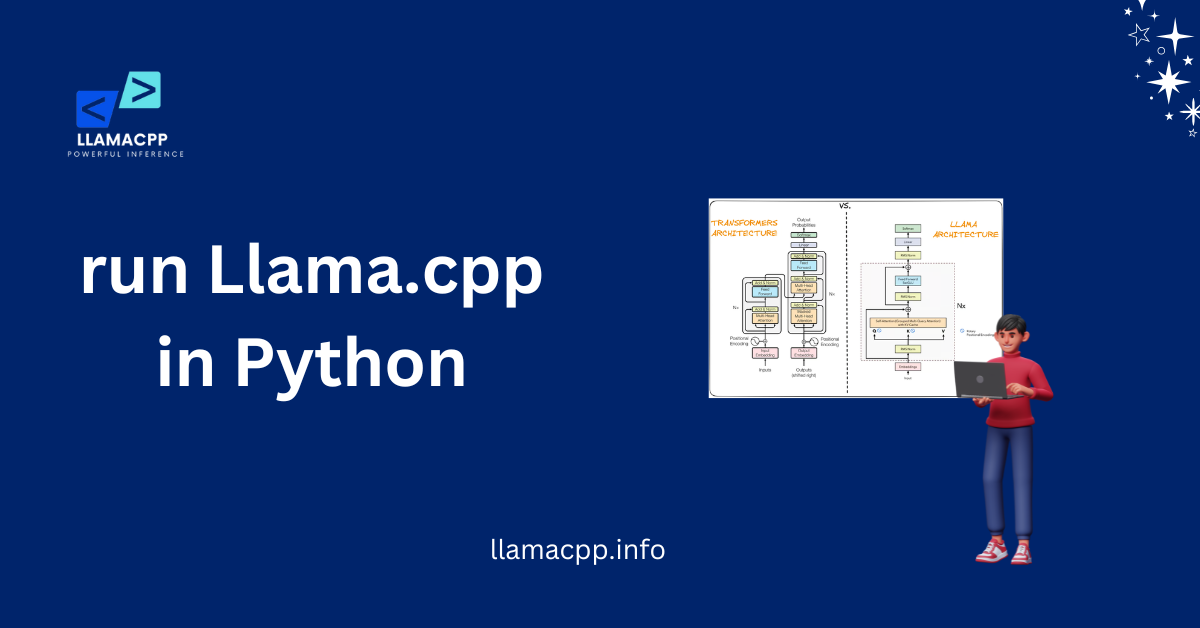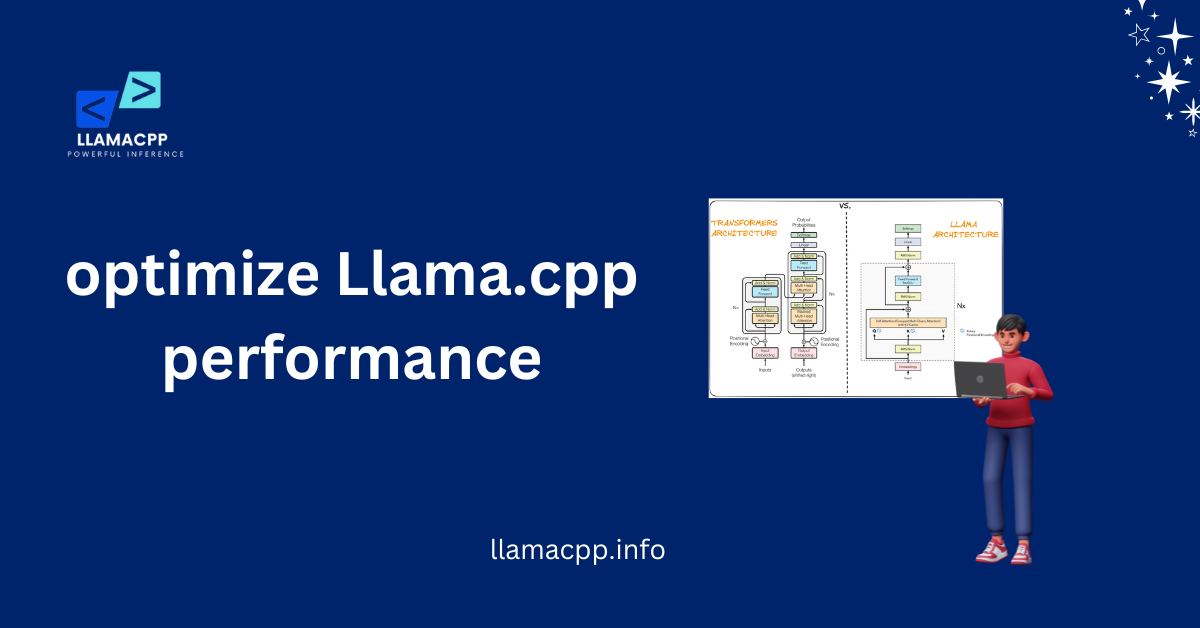Table of Contents
ToggleIntroduction
People who use GPUs to speed up AI models want to know if Llama.cpp support CUDA and ROCm. You need to know if Llama. CPP works with CUDA and ROCm if you have an NVIDIA or AMD graphics card. ROCm is AMD’s choice, while CUDA is for NVIDIA GPUs. Both use the power of graphics cards instead of just CPUs to help AI models run faster. But does Llama.cpp fully handle them? Let’s find out!
A GPU can make a big difference in how fast something works. Without the proper support, running AI models can be slow and frustrating. A GPU can speed up AI tasks and make them run more smoothly if Llama. CPP works well with CUDA and ROCm. This blog will discuss how well it works on both platforms and whether it is compatible.
How do I open Llama.cpp?
Llama.cpp is a tool for running large language models (LLMs) on home computers. It doesn’t need cloud servers and is small. It’s an excellent choice for people who don’t have access to the internet but still want to use AI models. You can run AI models directly on your device with Llama.cpp, which is faster and safer.
A lot of people want to know if Llama.cpp support CUDA and ROCm to make it run faster. GPUs help AI models run faster, even though they need a lot of power. To use ROCm with an AMD GPU, you need to have an NVIDIA GPU. If Llama.cpp can handle them, AI jobs can be done much more quickly. Let’s explore how it works and why it matters.
1. Why Should You Use Llama.cpp?
Llama.cpp is simple and fast. Users can run AI models without having to do a lot of complicated setups. Llama.cpp can run on local computers, while many AI tools need powerful cloud servers to work. If Llama.cpp supports CUDA and ROCm, users can use their GPUs to improve speed and efficiency.
Many people care about speed. If AI jobs only use CPUs, they might take a long time to finish. This is why GPU support is important. If Llama.cpp support CUDA and ROCm, it can process AI models much faster, making it a good choice for researchers and developers.
2. How Does Llama.cpp Work?
Llama.cpp brings in AI models and lets your computer run them. It’s made to be small and light so that it won’t slow down your system. But AI tasks need a lot of power to run. They can be slow if they don’t have GPU support. That’s why a lot of people want to know if Llama.cpp support CUDA and ROCm to improve AI.
If Llama.cpp uses these technologies, AI models will run much smoother. AMD GPUs depend on ROCm for faster performance, while NVIDIA GPUs use CUDA. The better the support, the quicker the benefits.
3. Is Llama.cpp easy for beginners to use?
Yes! Llama.cpp is easy to use, even for newbies. Some AI tools need complex code to work, but this one is easy to set up. If Llama.cpp support CUDA and ROCm, then anyone, even beginners, can use their GPUs to speed up AI tasks.
This makes it an excellent choice for anyone curious about AI. Whether you’re a creator or just starting, Llama.cpp makes running AI models easy. It gets even stronger with the proper GPU support.
Does Llama.cpp Support CUDA?
- Yes, Llama.cpp supports CUDA, allowing it to utilize NVIDIA GPUs for faster model inference.
- Enabling CUDA acceleration significantly improves processing speed and reduces CPU load.
- Users need to have the latest NVIDIA drivers and CUDA toolkit installed for proper functionality.
- Command line flags like
--gpuor--use-cublasare used to enable CUDA support in Llama.cpp.
1. How does CUDA make things run faster?
CUDA helps AI tasks run in parallel, meaning they handle multiple things at the same time. When Llama.cpp support CUDA and ROCm, AI models can work much faster than they could on a CPU alone.
Without CUDA, the CPU has to do all the work, which can be slow. However, when GPUs are used, AI models can quickly process large amounts of data. This is why many developers and researchers prefer using CUDA with Llama.cpp.
2. How do I turn on CUDA in Llama.cpp?
Setting up CUDA for Llama.cpp is simple. First, you must install the correct drivers for your NVIDIA GPU. Then, you configure Llama.cpp to use CUDA. Once it’s set up, Llama.cpp support CUDA and ROCm, which speeds up AI tasks a lot.
People who work with AI models every day will love this setting. It helps you do better and saves time. Because of CUDA, it’s much better to test models or do deep learning tasks.
3. Does Llama.cpp need to support CUDA?
Llama.cpp can work without CUDA, but it will be slower. If Llama.cpp support CUDA and ROCm, users can fully take advantage of their hardware. We can expect faster speeds, smoother performance, and less wait time.
Enabling CUDA is a great choice for those with NVIDIA GPUs. integrate Llama.cpp with a chatbot is a powerful tool for AI study and development because it makes AI models dash.
Does ROCm work with Llama.cpp?
- Yes, Llama.cpp supports ROCm, enabling AMD GPUs to accelerate model inference.
- ROCm allows efficient utilization of GPU memory and parallel processing for faster performance.
- Users must install the latest ROCm toolkit and compatible AMD drivers for proper functionality.
- Command line flags like
--use-rocmcan be used to enable ROCm acceleration in Llama.cpp. - ROCm support helps in handling larger models without overloading CPU resources.
- Ensures smoother execution and lower latency when running AI models on AMD hardware.
- Regular updates to ROCm and Llama.cpp enhance compatibility and performance improvements.
How to Enable CUDA in Llama.cpp?
With CUDA, Llama.cpp can use NVIDIA GPUs to speed up AI processing. When GPU support is not present, AI models run much slower on the CPU. Many users want to know how to enable CUDA because Llama.cpp support CUDA and ROCm, making it easier to speed up AI tasks.
Setting up CUDA requires installing the correct drivers and configuring Llama.cpp. When turned on, the GPU handles heavy tasks, which speeds things up. Now, let’s go through the steps to enable CUDA in Llama.cpp.
1. Install NVIDIA Drivers and CUDA Toolkit
Before using CUDA, you need the latest NVIDIA drivers. Since Llama.cpp support CUDA and ROCm, having the correct setup is essential.
You can download the CUDA Toolkit from NVIDIA’s website and install it. This will ensure that your GPU is ready for AI work.
2. Configure Llama.cpp for CUDA
After installing CUDA, you must set up Llama.cpp to use it. Change the settings so that Llama.cpp works with CUDA and ROCm. This will let the GPU speed things up.
This step ensures that Llama sees your NVIDIA GPU.cpp. Once they are set up, your AI models will run much faster.
3. Check and test the CUDA setup
Once configured, test if CUDA is working correctly. Run a small AI task and check GPU usage to confirm that Llama.cpp support CUDA and ROCm correctly.
You’re done setting up if the GPU is being used. With CUDA support added to Llama.cpp, AI processing can now go faster.
How to Enable ROCm in Llama.cpp?
- Install the latest ROCm toolkit and AMD GPU drivers compatible with your system.
- Ensure Llama.cpp is compiled or configured with ROCm support enabled.
- Use the
--use-rocmflag when running Llama.cpp to activate GPU acceleration. - Verify that your AMD GPU is detected correctly by running a test model or command.
- Adjust model parameters like batch size and context length for optimal GPU performance.
- Monitor system resources to ensure ROCm is being utilized efficiently during inference.
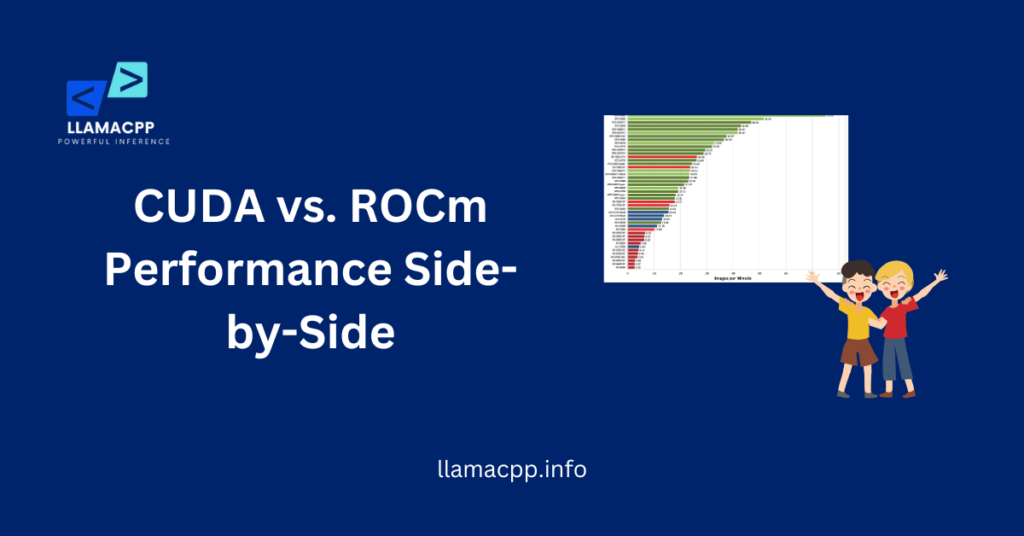
CUDA vs. ROCm Performance Side-by-Side
CUDA and ROCm both help Llama.cpp run AI models on GPUs, but their performance varies depending on the hardware. People often compare CUDA and ROCm in Llama.cpp to see which one works better.
CUDA is built for NVIDIA GPUs, while ROCm supports AMD cards. Their speeds, steadiness, and ease of setup are all different. Let’s compare their results to see the differences.
1. Speed and Efficiency
CUDA is known for its fast speed on NVIDIA GPUs. People who use NVIDIA hardware often get quicker results with Llama.cpp because it supports CUDA and ROCm.
AI speed is also faster on AMD GPUs when ROCm is used, but performance may depend on driver support and software changes.
2. Help and Compatibility
CUDA has been around longer and is well-supported. Since Llama.cpp support CUDA and ROCm, CUDA users face fewer setup issues.
ROCm is improving but may need extra steps for installation. Some AMD GPUs work best with it.
3: Stability and Improvement
CUDA is very well suited for AI jobs. Since Llama.cpp support CUDA and ROCm, many prefer CUDA for stability.
ROCm works well but may need extra tweaks for smooth performance. Updates help improve stability over time.
Common Issues and Troubleshooting
- High CPU/GPU Usage: Close unnecessary background programs and optimize model parameters to reduce load.
- Crashes During Inference: Check for compatibility between Llama.cpp version, model files, and drivers.
- Memory Errors: Reduce batch size, context length, or use mixed precision (FP16/INT8) to save RAM/VRAM.
- Slow Performance: Enable GPU acceleration (CUDA or ROCm) and update drivers for better speed.
- Incorrect Outputs: Fine tune the model on your dataset and verify preprocessing steps.
- Installation Errors: Ensure all dependencies like Python, CMake, and GPU toolkits are correctly installed.
- Connectivity Issues with Chatbots: Verify API integration and test with sample queries before full deployment.
Conclusion
Llama.cpp is a powerful tool for AI tasks, and GPU support makes it even better. Since Llama.cpp support CUDA and ROCm, users can choose the best option based on their hardware.
CUDA is incredible for NVIDIA GPUs, while ROCm works well with AMD cards. Understanding installation, performance, and Troubleshooting helps users get the best results. With the proper setup, Llama.cpp runs efficiently on both platforms.
FAQs
1. Does Llama.cpp support CUDA and ROCm?
Yes, Llama.cpp support CUDA and ROCm, allowing users to run AI models on NVIDIA and AMD GPUs for faster processing.
2. CUDA or ROCm: Which is better for Llama.cpp?
CUDA is designed for NVIDIA GPUs and offers better stability. Though ROCm is made for AMD GPUs, you should do some extra setup.
3. How do I get CUDA for Llama.cpp to work?
To use CUDA for acceleration, you need to install the NVIDIA drivers and the CUDA Toolkit and set up Llama.cpp.
4. Why doesn’t Llama?cpp work with my GPU?
Make sure that CUDA and ROCm support is turned on in Llama.cpp. Make sure the correct drivers are loaded, and if they aren’t, update them.
5. In Llama.cpp, is it possible to switch between CUDA and ROCm?
Yes, but you need to set up Llama.cpp so that it uses the right software for your GPU.

